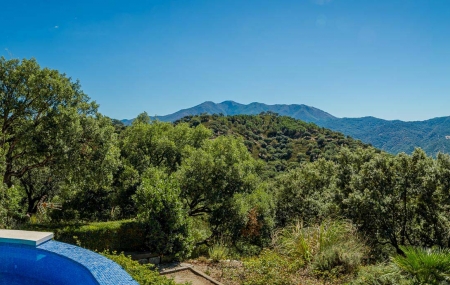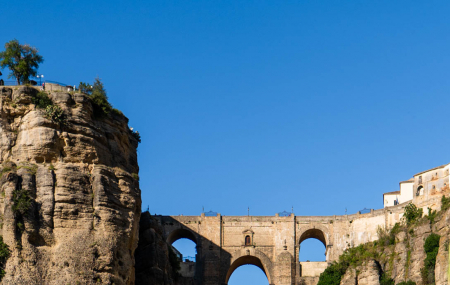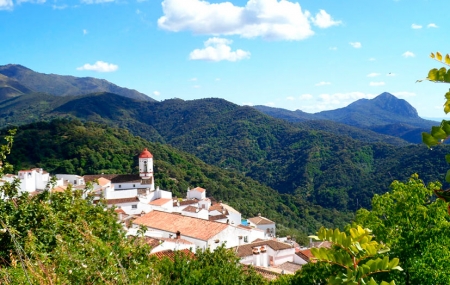El Gastor and Montecorto villages, Ronda mountains
These two classic white villages lead a quiet rural existence just 30 minutes from Ronda. They’re not touristy: just right for those who want a genuinely rural holiday retreat. The climate is very warm, very sunny, and so we really like villas to have swimming pools here. The excursion options from here are varied and excellent.
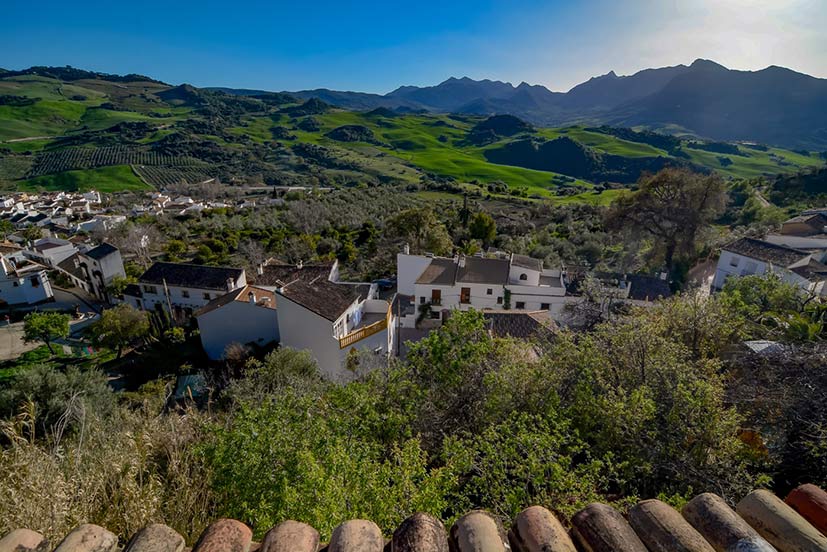
El Gastor village
Winsome El Gastor (population 1,900), sitting on its hillock 590 metres up from the nearby lake, goes by the moniker of the “Balcony of the White Villages.” You wouldn’t think it makes its living from agriculture and cattle farming, so proudly kept, neat as a pin it is.
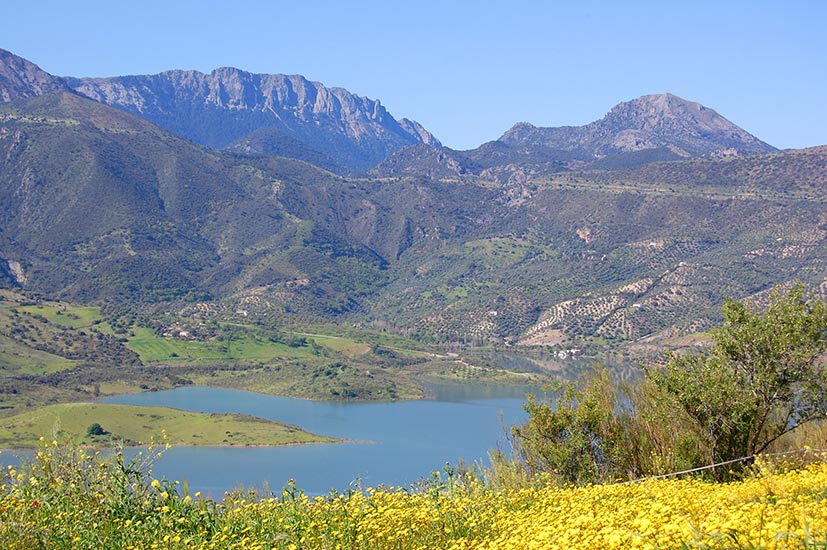
El Gastor is one of those quintessentially unassuming Andalusian villages where the church bells chime happily, old men adorn the square under towering palm trees and nothing much ever happens.
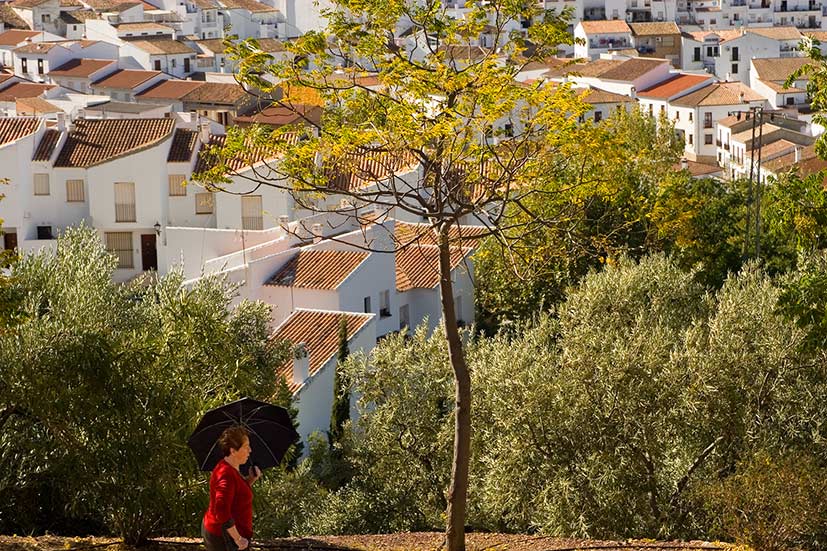
It makes an agreeable difference to be in a place where people still greet each other in the street, where the simplicity of a restaurant belies the quality of its home-cooking and you get more change in your hand for a beer or coffee than you’re used to…
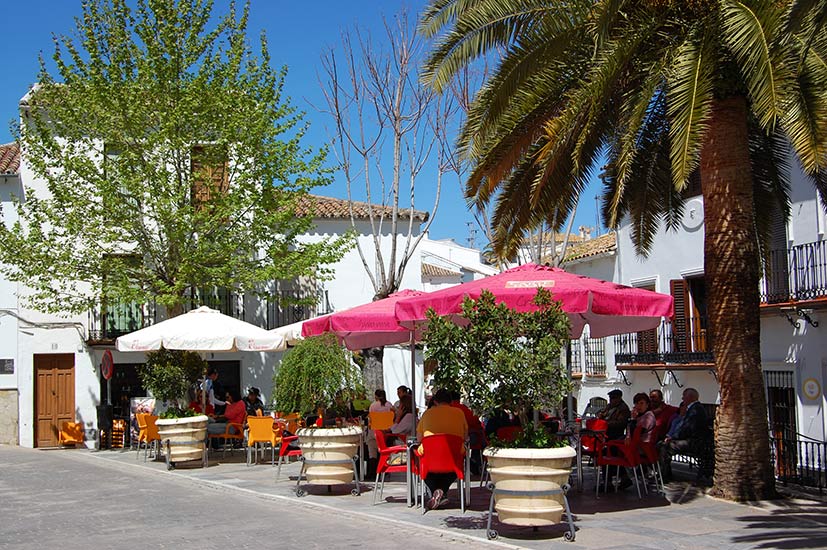
One of the last 19th bandits of the Ronda Mountains, “El Tempranillo”, made the village his refuge and it was also home to flamenco guitarist, Diego del Gastor, whose house museum can be visited. Its claims to fame halt just about there, although the Giant’s Dolmen, a megalithic tomb on the Algarin hill here and decidedly worth a visit, points to significant activity 6,000 years ago.
El Gastor is a place of long, late summers: it’s quite something to be in shirtsleeves in late October with a whiff of jasmine in the air. The warm climate makes the location an interesting holiday choice from early spring to late autumn.
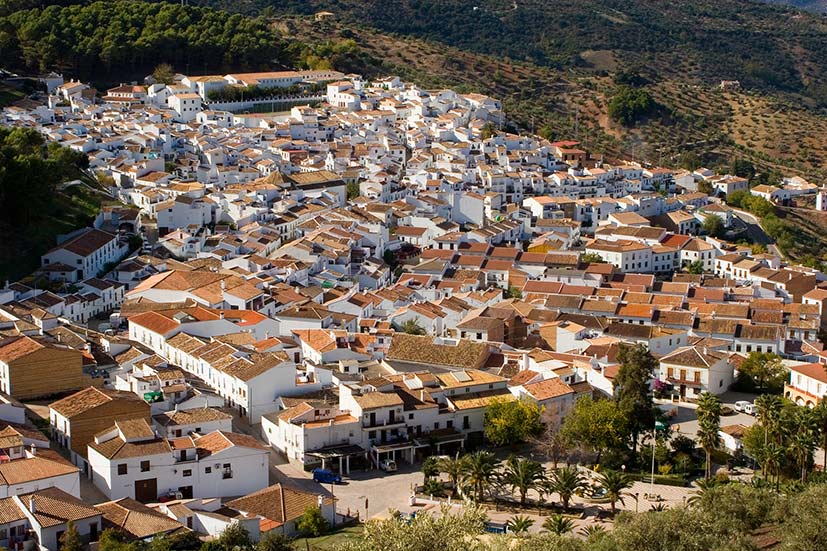
If your stay coincides with the feast of Corpus Christi, just for once in the year you’ll witness a very different scene. White turns to green as the villagers deck the streets with palms and garlands, setting up impromptu altars for the church procession to bless. Afternoon music accompanies the festivities with melodies played on unusual traditional wind instruments, developed from the Arabic chirimia.
The first weekend in August sees the summer fiestas get off to a bang with fireworks, games for children and band music in street scenes dominated by bulls donned with heavy masks that spit out fireworks as they wander the village, like some pyrotechnic minotaurs. The celebrations are as curious as they are short and sweet, and village life promptly melts back into its customary somnolence.
The best location for holidays in El Gastor are just outside the village, on the hills which overlook the spectacular turquoise lake to Zahara or with a virtually private view up a Ronda mountain valley
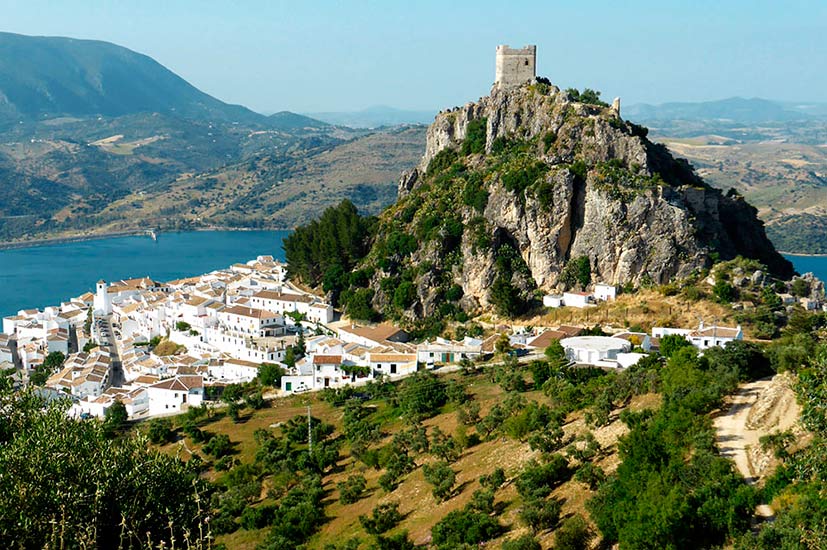
Photo: the village of Zahara, just above the lake is near El Gastor and Montecorto.
Keen walkers will be delighted with the chance to drive out to the Sierra de Grazalema and start rambling the karstic landscapes, or further afield to the cork oak forests of Alcornocales Natural Park.
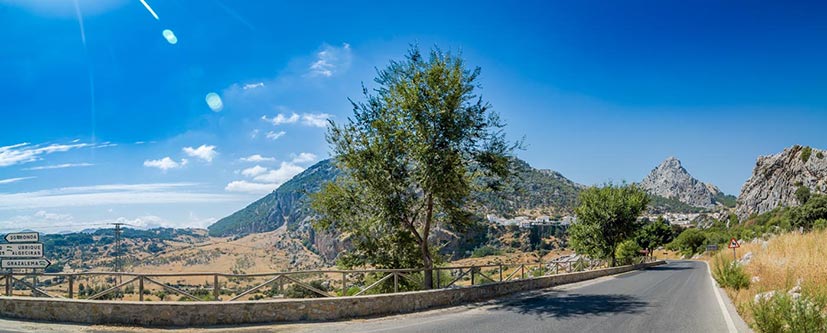
Photo: road to Grazalema village
The Pileta Cave is of particular interest for its rock formations and cave paintings.
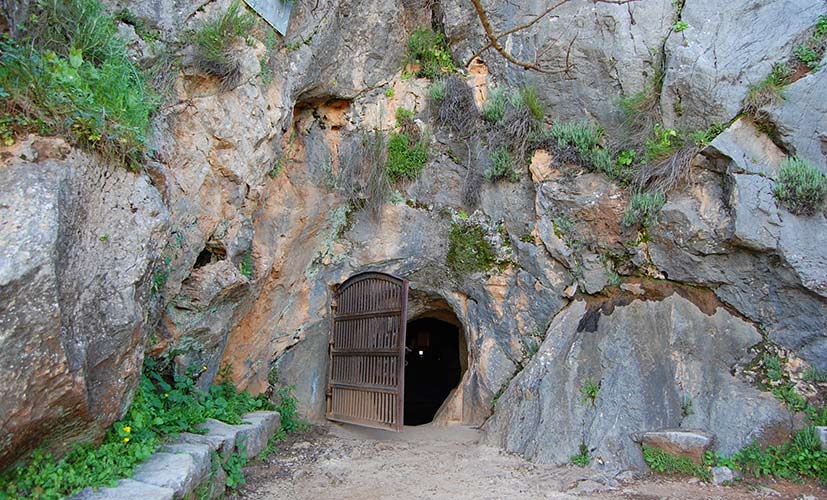
Photo: entrance to the very interesting Pileta cave
Thrill-seekers may want to try hang gliding or paragliding from Sierra de Lijar, just up the road at Algodonales. It’s one of the best flying sites in Europe and the World Hang Gliding Championships where held here in 2001.
Excellent excursions that also offer good venues for lunch, dinner or just tapas range from Zahara on the lake, pretty Montejaque, Grazalema, Arcos de la Frontera and many more, especially Ronda, which is a very easy half hour’s drive from El Gastor. Seville is definitely visitable: an hour and a half away.
Montecorto village
Little Montecorto (700 inhabitants, altitude 490 metres), is just 20 minutes from Ronda. It’s built on a forested hillside where the highest properties in the village have beautiful views of the countryside and the Sierra de Grazalema.
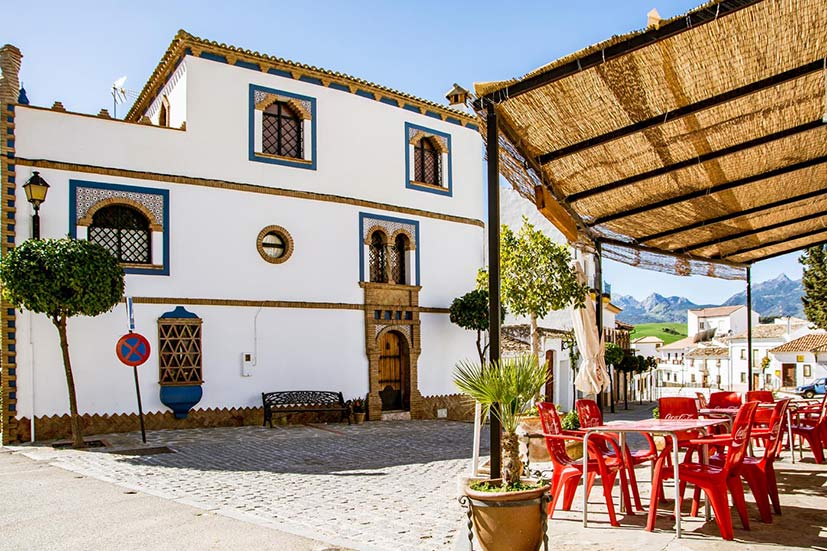
Both pretty and quiet, it particularly noted for the abundant springs which flow through the streets past flower-decked white houses. Like many small Andalusian villages it turns completely silent during the afternoon siesta time. The shops then reopen at 5 pm and life starts up again.
Montecorto (“little mountain”) is the most westerly settlement in the province of Malaga. The village is younger than many others in the area, since in days gone by the gentle mountainside on which the village is situated offered little protection in time of war.

However, the surrounding hillsides have seen settlement since early times: the area is rich in flint and during the Palaeolithic period axes and cutting tools were made on the mountainside just outside of the village.
The Romans mined here and in the 13th century, the Moors of Granada’s Nasrid Kingdom maintained an important frontier post on the rocky pinnacle of “El Moral”, just outside of the village.
Local people will tell you of the Moorish treasure, reputedly stashed inside a cave somewhere close to the village, its entrance blocked by a large boulder. Good hunting!
Like El Gastor, Montecorto has small shops, chemist’s, a bank and places to eat simply but well. There are plenty of special places for days out and some excellent restaurants that we will be pleased to tell you about.
Wonderful excursions that also offer good venues for lunch, dinner or just tapas range from Zahara on the lake, pretty Montejaque, Grazalema, Arcos de la Frontera and many more, especially nearby Ronda.

Photo: the old bridge at Ronda town. Visiting this historical town is a must if you are staying in Montecorto or El Gastor villages.
Marbella abd its beaches and Sevilla are definitely within reach on a day trip: less thab an hour and a half away. As one of the holiday documents, we send all our clients our detailed recommendations on the best places to visit, restaurants and how to find them.



